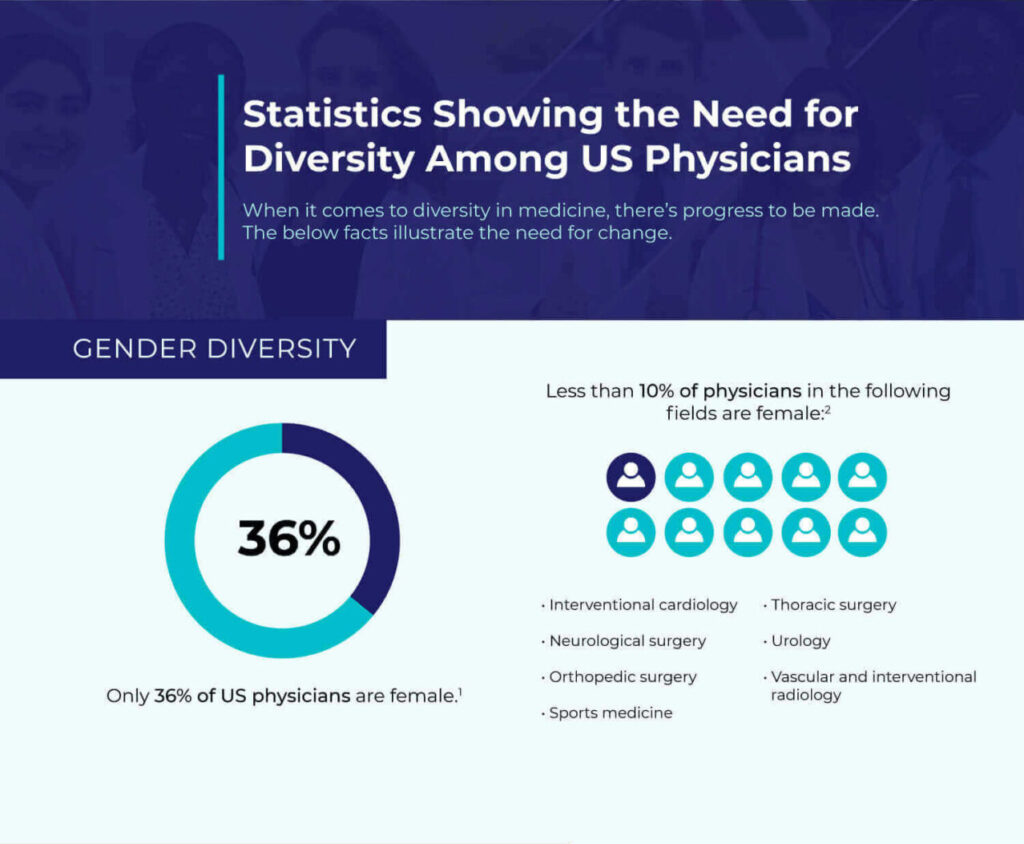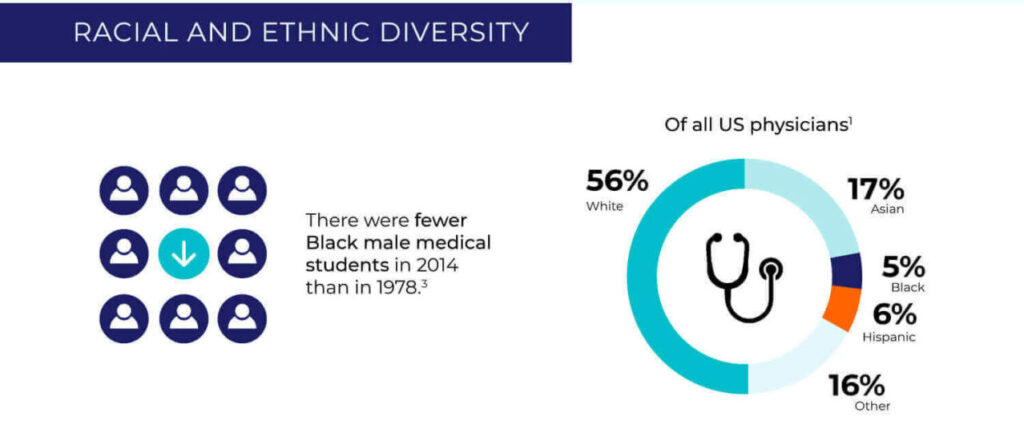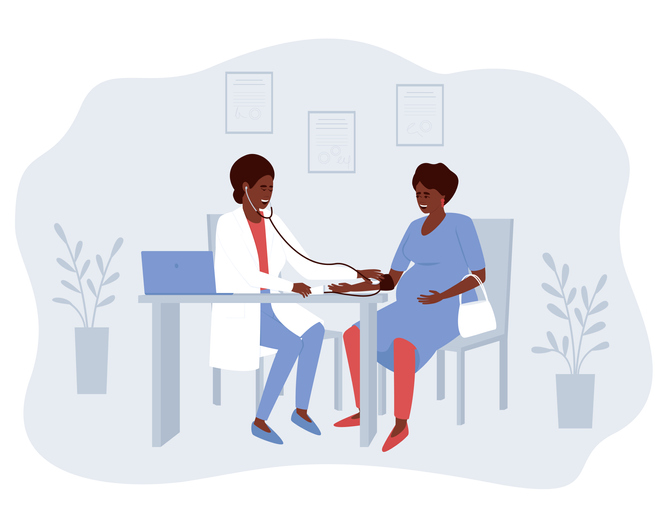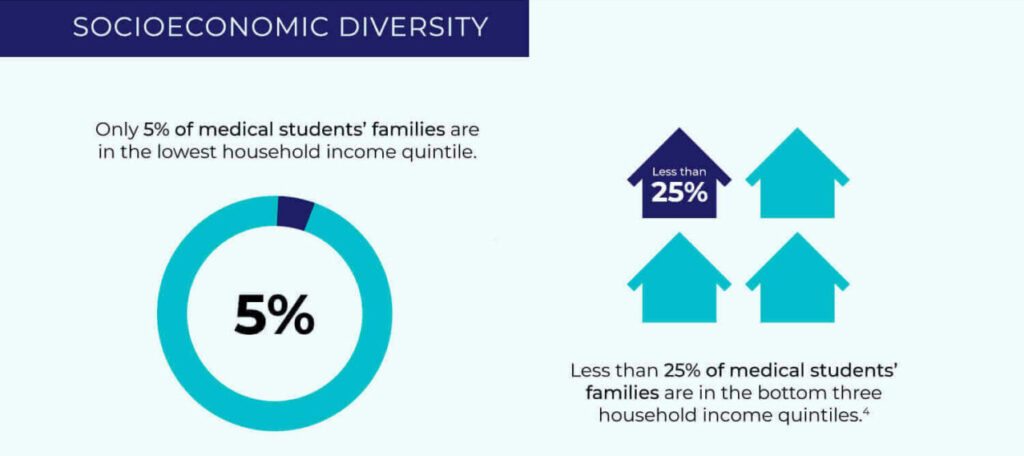To provide the best possible care for all patients and help minimize racial disparities, medical professionals need to acknowledge and recognize differences among varying populations. Diversity among physicians—pertaining to socioeconomic status, race, gender identity, and so on—is key. Many physicians already recognize that a commitment to diversity is critical, yet there is still progress to be made.
By the numbers
In the chart below, it is pretty clear that the medical field has a long way to go to diversify its ranks. “Diversity in Medicine: Facts and Figures 2019” from the Association of American Medical Colleges (AAMC) touches on gender distribution among doctors, revealing that nearly two-thirds of physicians are male.
The same report also includes a breakdown of active physicians by race and ethnicity, which shows that more than half of practicing physicians are white, 17 percent are Asian, 6 percent are Hispanic, and 5 percent are Black. This is something that comes as no surprise to Dr. Antonio Webb, an ortho pedic spine surgeon, who notes that one AAMC report found there were fewer Black male medical students in 2014 than there were in 1978. He says that when he was a child, he didn’t know any doctors who looked like him.
pedic spine surgeon, who notes that one AAMC report found there were fewer Black male medical students in 2014 than there were in 1978. He says that when he was a child, he didn’t know any doctors who looked like him.
While research on sexual and gender orientation as well as religious affiliation among physicians is limited, diversity in these realms is also important for developing good bedside manner and providing quality care.
HOW DIVERSITY IN HEALTH CARE BENEFITS PATIENTS
A lack of diversity in the workforce limits the effectiveness of medicine, containing it within a single ethnic lens and a particular set of values. The medical workforce should instead reflect the variety of patients for which they provide care.
For instance, patients’ religious beliefs can similarly affect the quality of care they receive. A recent paper on cultural competence in medicine reveals the many ways in which an individual’s beliefs can affect them as a patient. Additionally, the medical research community acknowledges that health disparities among LGTBQ individuals are a significant issue. Just consider this reflection from one transgender patient.
“It is important for physicians to be diverse in large part because our patients are diverse,” explains Dr. Lisa Doggett, a family physician. “If we can understand our patients’ belief systems and values, we will be able to provide better care for them.”
 When a patient cannot find providers that resemble them, their beliefs, their culture, or other facets of their life, they run the risk of not being understood or being able to receive the appropriate treatment. One clear example of this is the extreme divide in health outcomes for expecting mothers based on race. The Centers for Disease Control and Prevention (CDC) reveals Black and native women are two to three times more likely to die of pregnancy complications than white women.
When a patient cannot find providers that resemble them, their beliefs, their culture, or other facets of their life, they run the risk of not being understood or being able to receive the appropriate treatment. One clear example of this is the extreme divide in health outcomes for expecting mothers based on race. The Centers for Disease Control and Prevention (CDC) reveals Black and native women are two to three times more likely to die of pregnancy complications than white women.
A more diverse physician workforce also makes needed care more accessible to patients who might otherwise be overlooked—research on primary care physician distribution shows that practitioners who are from minority racial and ethnic groups are much more likely to work in underserved communities than their white counterparts.
Physicians themselves could enjoy a better quality of life as a result of a more diverse health care workforce. Doctors who are part of an underrepresented group are often able to build incredibly strong relationships with the minority individuals they serve.



